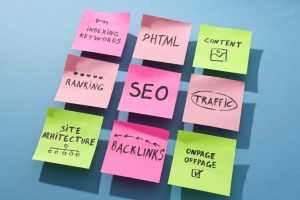In today’s digital world, image SEO optimisation is often overlooked, but it plays a huge role in how well your website performs and how easily people can find you online.
While most businesses focus on text and keywords, optimising images can make a big difference in page load speed, user experience, and even your search engine rankings.
If you haven’t thought much about it, don’t worry – this blog is here to show you why image SEO matters and how you can make sure your images are working as effectively as possible for your site.
What is image SEO optimisation?
Image SEO optimisation refers to the process of making images on your website more search engine-friendly. This includes optimising file sizes, alt tags, image quality, and formats to ensure your images load faster, are indexed correctly by search engines, and contribute to a positive user experience.
Well-optimised images can increase your website’s visibility on search engines, improve user engagement, and ultimately boost your SEO rankings.
For businesses looking to enhance their image SEO, consulting with digital marketing experts in the UK can provide professional guidance and strategies to improve your website’s image optimisation efforts.
How to use alt tags for SEO?
Alt tags (alternative text) are essential for optimising images. They describe what an image is about, providing context for search engines and improving image searchability. Alt tags also play a key role in accessibility, helping screen readers describe images to visually impaired users.
Good alt tags are descriptive and relevant. For example, instead of using “image1.jpg”, a more descriptive alt tag like “fresh organic tomatoes in a basket” is far more effective. Bad alt tags, such as “click here” or “image1”, don’t provide any real value for SEO.
Using alt tags properly can also enhance your page’s indexing, making your images easier to discover via search engines.
What are the best image sizes for SEO?
Image size plays a crucial role in SEO and mobile optimisation. Large image files can significantly slow down website load times, negatively impacting both user experience and SEO rankings. Google and other search engines factor page load speed into their rankings, meaning slow-loading websites can drop in search results.
For optimal SEO, images should be resized appropriately. Images should be small enough to ensure quick loading times without compromising quality. Certain tools allow you to reduce file sizes without losing quality.
How does image quality affect SEO and user experience?
The balance between image quality and compressionis critical for SEO. High-quality images enhance the visual appeal of your site, but excessively large or uncompressed images can slow down page loading times, leading to a negative user experience.
Poor image quality can also impact user engagement, increasing bounce rates and reducing time spent on your website. This can harm your SEO rankings, as search engines consider these metrics when evaluating site performance. Maintaining high-quality images while ensuring they are optimised for fast loading is crucial for both SEO and user experience.
Connect with Haarty Hanks for e-commerce SEO in the UK
Image SEO optimisation is an essential part of any SEO strategy. By improving image quality, using alt tags, resizing, and compressing files, businesses can boost website performance and search rankings.
For a detailed image SEO audit, consult us at Haarty Hanks. As a trusted digital marketing company in the UK, we specialise in services like image optimisation to help businesses succeed online.




